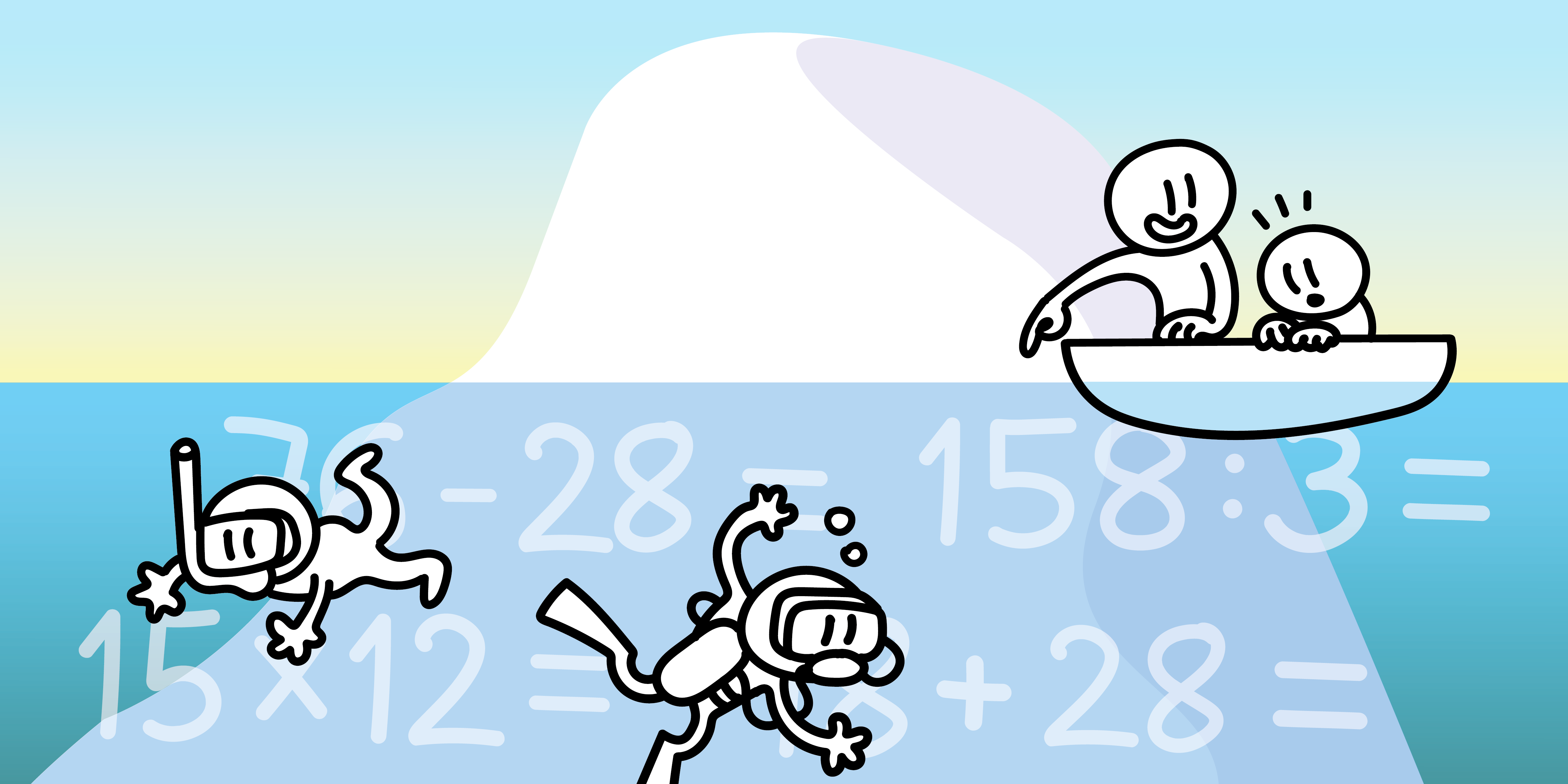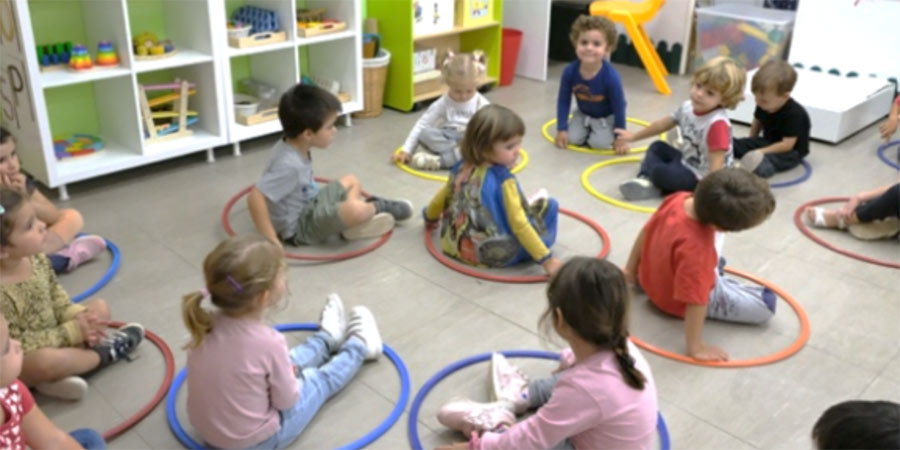Roman numerals are a classic (ha ha) in the elementary classroom. This system that comes from Etruscan numerals, is additive (the symbols are added or subtracted) and not positional, like the current system of Arabic origins. What use is there to studying Roman numerals in the XXI century? Often, neither students nor teachers are aware of why Roman numerals appear in the majority of western curriculums. We say ‘the majority’ because, in fact, the disappearance of Roman numerals in the new LOMLOE curriculum has been debated. However, in Innovamat we have four very clear reasons of why to use them from time to time in the classroom, from mid-elementary school onwards.
First, let’s go over how they work!
Seven symbols...
Roman numerals are made up of seven symbols that match up to seven uppercase letters of the Latin alphabet, three less than the Decimal Positional System (DPS) that we currently use:

Using the seven previous symbols, you can represent any roman number, keeping in mind that the Romans didn’t consider 0, negatives or decimals. In DPS, the value of each digit depends on its position within the number (the number 99 for example, the first 9 means 90 and the second means 9). However, in Roman numerals, the symbols don’t change value but they are added or subtracted following certain rules. Let’s have a look at them!
Three rules...
Add
When a symbol is placed after (to the right of) a larger value, it is added. For example: XI = 10 + 1 = 11
Subtract
When a symbol is placed before (to the left of) a larger value, it is subtracted. For example: XL = 50 − 10 = 40 This way, when a symbol is between two larger numbers, it is subtracted from the symbol on the right. For example: XIX = 10 + (10 − 1) = 19.
Large numbers
Any number can be multiplied by 1 000 by drawing a horizontal line above it.
And three exceptions!
Don’t repeat a symbol more than 3 times in a row
There can’t be more than 3 of the same symbol in a row. For example, 4 can’t be written as IIII (IV).
Don’t repeat symbols that start with 5
The symbols V, L and D (5, 50 and 500, respectively) cannot be repeated.
Not all symbols can be subtracted
Be careful because this is the exception that gives our student most difficulty! Only the symbols I, X and C (1, 10 and 100 respectively) can subtract and can only subtract the 2 symbols that are immediately larger. So, I can only subtract V or X, X can only subtract L or C, and C can only subtract M. That is, there are only 6 possible subtraction combinations: IV = 5 − 1 = 4; IX = 10 − 1 = 9; XL = 50 − 10 = 40; XC = 100 − 10 = 90; CD = 500 − 100 = 400; y CM = 1000 − 100 = 900.
Some of these rules have changed throughout history. For example, it isn’t hard to find ancient texts in which 4 is written as IIII instead of IV. However, with these rules and exceptions in mind, today we can write Roman numerals correctly.
Why take this to the classroom?
We started the article explaining that we have found 4 big reasons to include Roman numerals in elementary. Below we will briefly explain them.
I. Historical reasons
Knowing the history of different numeral systems is knowing the history of math and so, humanity. Knowing that there has been other systems to represent numbers opens the door to talking about history in the classroom and brings another perspective on the system we currently use.
II. Cultural reasons
Apart from inscriptions on monuments and historical texts, Roman numerals are still used today, on watches, when mentioning kings, writing centuries, numerate lists like this one, in edits, etc. Being able to interpret them is general culture. Avoiding more and more French museums stop using roman numerals ‘because people don’t understand them’ is in our hands.
III. Mathematical reasons
To understand concepts like decimal and positional in the current DPS, it is very useful to know alternatives that allow us to compare. This way, it allows us to understand that, in math, there are often various ways of representing one concept.
IV. Contextual motives
Roman numerals can be converted into a fantastic classroom context to work on combinatorial concepts which are sometimes difficult to contextualize. And also when doing statistical studies, such as the one we set out in the second session of the first year of middle school, in which we propose studying the length of Roman numerals in a determined range to compare them with DPS numbers.
How can we take this to the classroom?
An interesting way to introduce Roman numerals for the first time in class is to present a text, image or object where Roman numerals appear in real contexts and ask the students if they know when these symbols mean. Through the conversation, the students can deduce the values of the more common symbols until, between all of us, we complete a table similar to the one at the start of the article, which serves as a reference to start playing with the rules.
From there, different rich activities can be presented. We find some good examples of this in session 10 of 4th grade Number Lab, in which we see Roman numerals for the first time. We set questions or challenges similar to the following:

- Which number in the range of 1-100 uses the most symbols to be represented in Roman numerals?
- What is the smallest number that can be made by using exactly 5 symbols?
- Write all the numbers less than L that start with X and need 2 or 3 letters.
- Which Roman numerals less than C can be written with exactly 2 letters?
- In the numbers between I and C, which symbol is most common? And the least common? Do a bar graph to respond.
What do you think? Would you know the answers? It is obvious that this kind of question invites investigation, experimentation, and productive practice with Roman numerals, in a much more fun way than completing the typical worksheet with numbers translating from one system to another. Try it with your students and you will see! Valete, readers!
Would you like to try this in the classroom?
In the session: "Numbering Systems" (Grade 5), we will discover number systems that are different from our own and make deductions in order to identify the numbers.
Try the session






